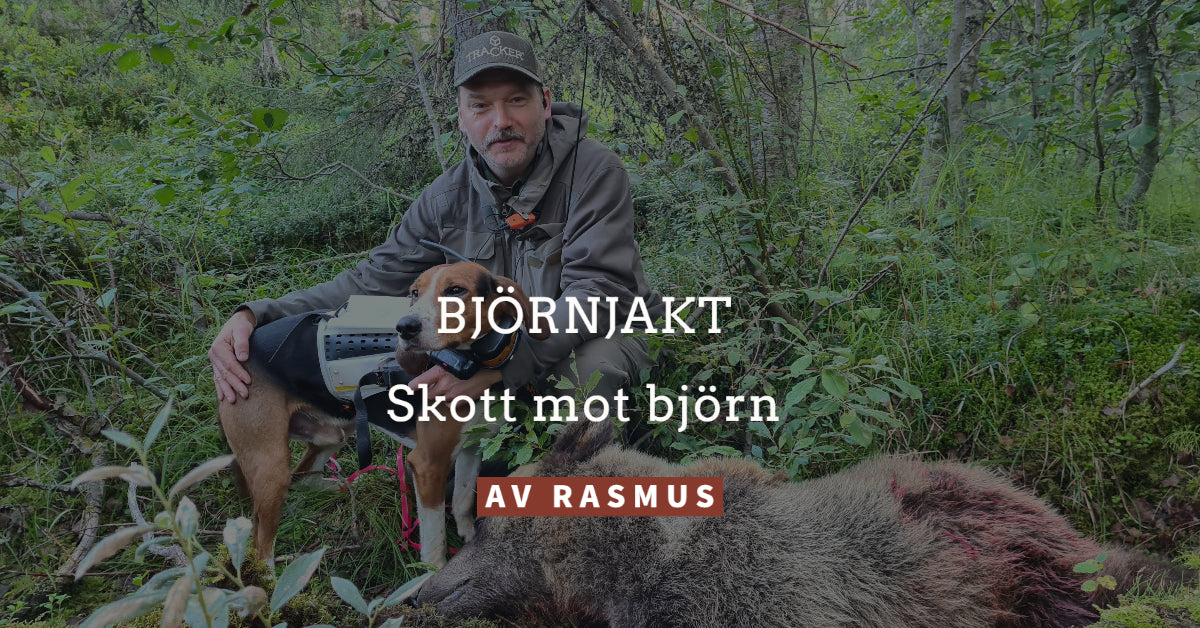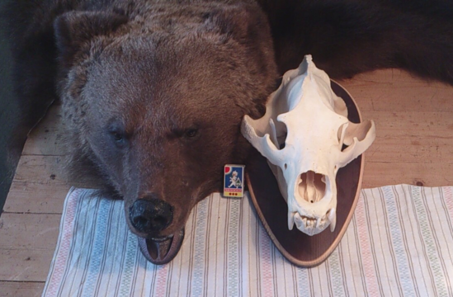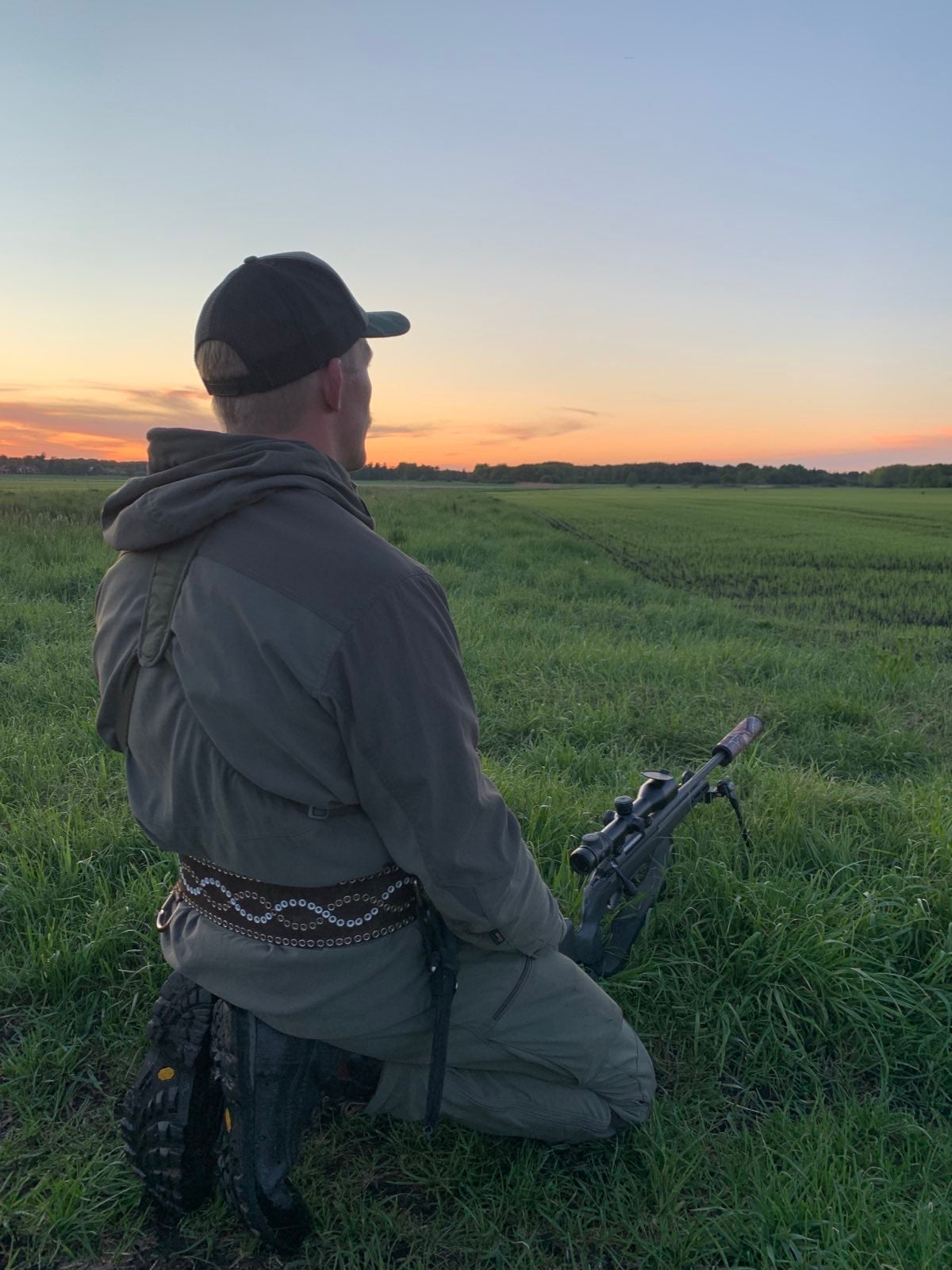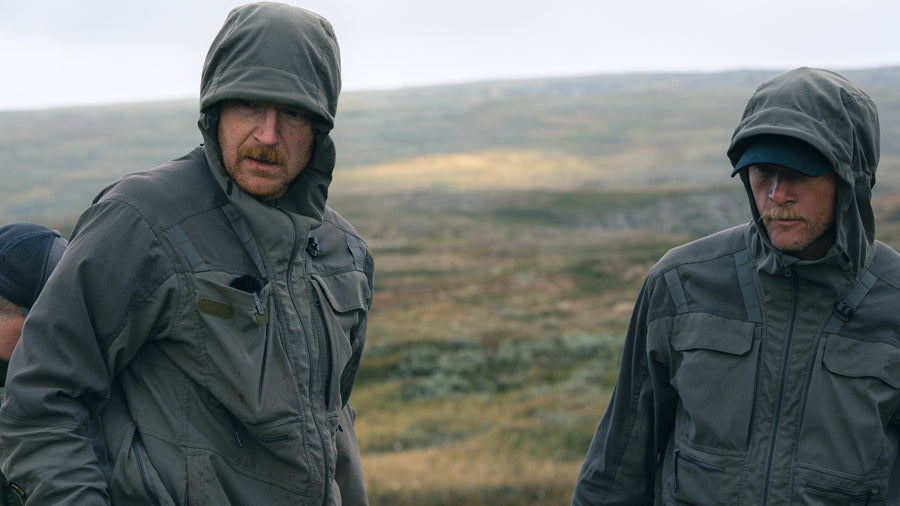
"Trying to shoot an attacking bear is like trying to hit a tennis ball thrown at you"
I would probably say that's an exaggeration, but there's a small point in the expression. Fortunately, the real vital target area is much larger, and that's what I'm going to discuss a bit.

Maximum Target Area
Since my first encounter with a bear attack about 22 years ago, which in hindsight was a bluff charge, I have devoted some thought and training to how to stop a bear if necessary. My idea has been quite simple, and simple thoughts are needed in tight situations when many decisions have to be made incredibly quickly. I aim for the largest possible target area, which usually means the chest region regardless of the angle from which you fire the shot.
A bear's brain is quite small and does not offer much leeway. Looking at a bear's skull from the front, you can also see that if you remove muscles and fur, the margin for a successful shot is very small.

The bear in the picture weighed approximately 200 kg live weight. Picture approximately straight from the front. Skull and stuffed skull are from the same individual.

The bear in the picture weighed approximately 200 kg live weight. Picture diagonally from above. Skull and stuffed skull are from the same individual.
My motto to aim where there is the greatest chance of fatally injuring the bear has so far paid off in the way I wanted, i.e., I have survived.
On attacking bears, I usually aim behind the skull in order to shoot off the spine, but if my bullet misses it, it should still enter the body cavity and inflict considerable damage on vital organs. The idea is that if I aim at the head of a charging bear and miss the brain, the effect may be that my bullet passes through, for example, the cheek muscle and hits the ground between the bear's legs. Someone here will wonder a bit what I mean, but consider that a bear attacking comes low, and then add that the shot is probably fired at 2-6 meters, so the angle is correct.

The largest target area is clearly just to the left of the nose ridge. Shooting at the brain on this bear is very difficult. A miss or grazing shot gives little chance for a second shot as the distance is 5-6 m. In the chest, the vital target area is approximately the size of a football in diameter.

A shot to the skull here, if the brain is missed, can result in the bear continuing almost unaffected. But if one aims between the ears just at the ear attachment, the target area is relatively large backward; even if the spine is missed, the likelihood is high that the bear will fall with a shot in the target area from a slight upward angle.
Caliber and Bullet Choice
Caliber and bullet choice are important, but one should not give too much attention to either caliber or bullet choice. Approximately the first 10 bears I shot with 6.5*55 using 10.1 g Alaska bullets, and all died without causing any danger to me or others.
But the more I dealt with bears and especially tracking wounded bears, I realized how quickly a situation arises where a lot of force may be needed to stop a determined bear; the saying "a little is enough but much may be needed" is appropriate.
A powerful caliber does not compensate for a poorly placed shot, even if it may possibly provide a slightly larger margin with a half-bad shot.
It was precisely that margin that made me switch from 6.5*55 to 9.3*62. With even more experience in the bag, I tried 8*57 JS a few years ago and thought it felt like a really good middle ground between 6.5 and 9.3. After having taken down several bears with the caliber, my confidence in its ability to handle the situations that arise is high.
But, one continues to be curious about calibers, so right now, a .308 Win is in the gun cabinet for evaluation in the coming years. I have an idea that it is important to deliver joules (read: energy) into the bear for stopping power, which means that if I am to go down in caliber, I need to increase the bullet weight to still deliver enough joules. So, my choice for this year's bear hunt will be to evaluate heavy caliber .30 bullets. I am not hesitant about the caliber; it's just that I need to feel absolutely confident that the firearm, caliber, and bullet choice will work optimally. Increased bullet weight means automatically worse trajectory, but that's not a problem for me as the normal shooting distance in bear hunting is 15-30 m.</





Conny Abrahamsson
March 31, 2023
Ser framemot min första björnjakt kommande höst och har “allt” att lära, både teori och praktik. ;-)